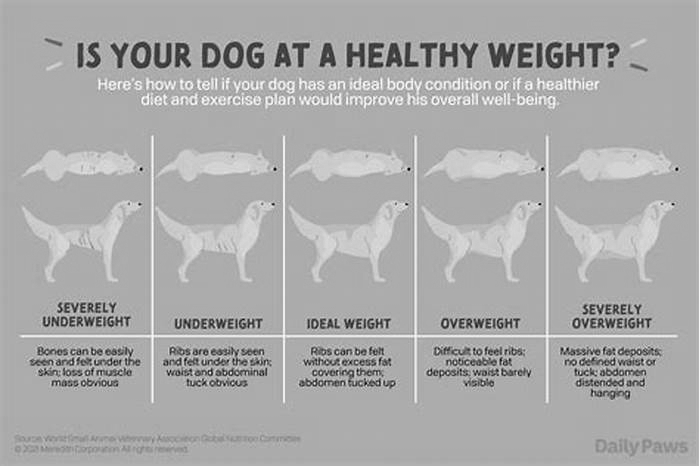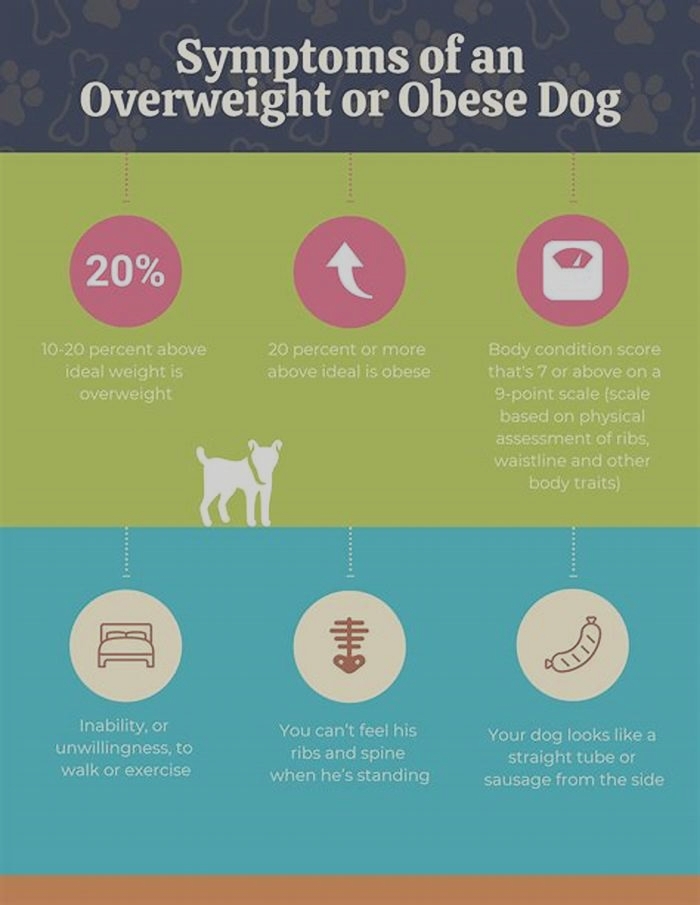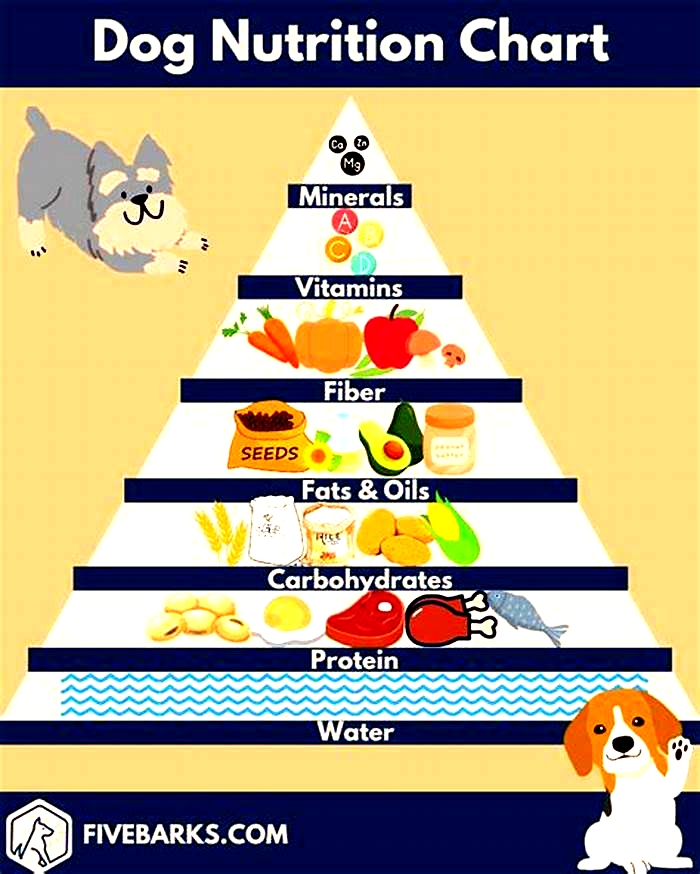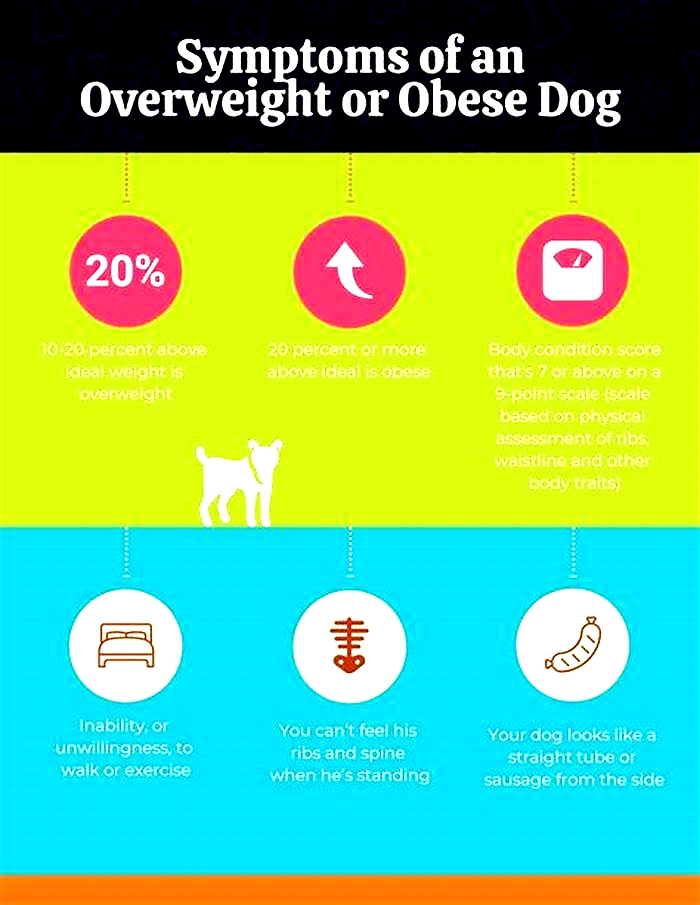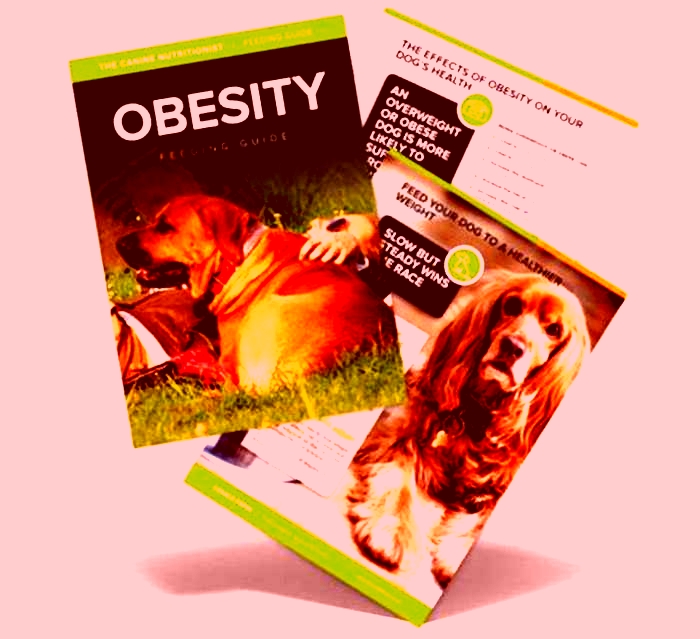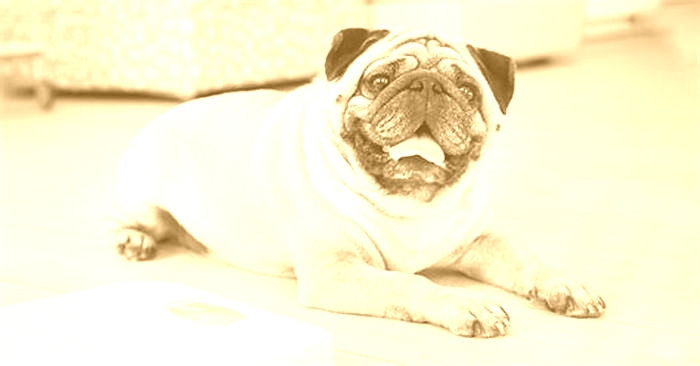The Skinny on Canine Obesity Tips for Managing Your Dog s Weight
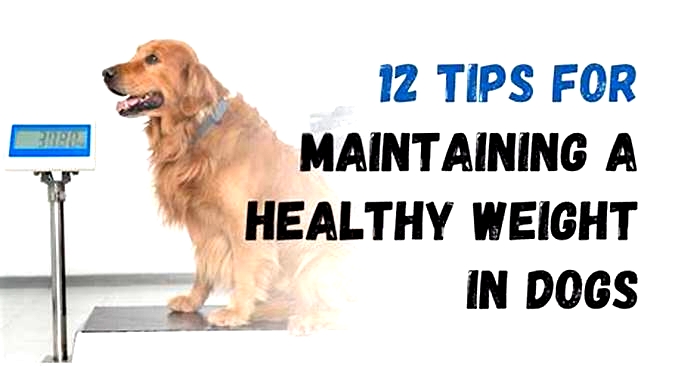
Obesity in Dogs: What to Know
According to the Association for Pet Obesity Prevention, more than half of all dogs are overweight or obese. A dog is considered overweight when their weight is 15% or more above the ideal. Dogs are obese when their weight is 30% or more above the ideal weight for that animal.
Generally, obesity in dogs occurs when there is an imbalance between the amount of energy consumed versus the amount of energy used, although studies show that other factors can also contribute to the problem. Obese dogs tend to be older, female, and spayed. As one might expect, obese dogs tend to receive less exercise than their healthy-weight counterparts.
According to one study, some breeds have shown a predisposition to obesity. The breeds in question include Basset Hounds, Dachshunds, Beagles, Cairn Terriers, West Highland White Terriers, Scottish Terriers, Shetland Sheepdogs, Cavalier King Charles Spaniels, Cocker Spaniels, and Labrador Retrievers. In contrast, the studys authors note, some breeds, such as the sighthounds, rarely develop obesity.
Dogs that have been spayed or neutered also may have a greater tendency to gain weight, possibly due to the change in metabolism and loss of hormones. Its important for dog owners to be aware of this possibility and make certain their dogs maintain a healthy weight after surgery.
Age can also be a factor in obesity. As dogs age, their activity level decreases and they lose lean body mass. Dog owners should work with their veterinarians to adjust food intake as the dog ages.
Obesity in Dogs and Health Issues
Unfortunately, obesity can contribute to (or cause) serious health problems in dogs. Among the health problems that are made worse by obesity are:
Obesity has also been shown to contribute to an overall shorter life span for dogs when compared to the lifespan of healthy-weight dogs.
Is My Dog Obese?
Dog owners can access a variety of resources to determine if their pet is obese. Online, they can look for body condition charts from responsible sources to get a visual idea of how their dog should be shaped. Generally, dogs with an ideal weight are well-proportioned. You should be able to easily feel their rib bones, spine, and pelvic bones, but they should not be visible or protruding. There should be a visible tuck at their waist.
Of course, the best way to tell if your dog is overweight or obese is for them to receive regular check-ups from their veterinarian. Your dogs veterinarian is able to determine the animals ideal weight and provide you with a plan for reaching that ideal weight if the animal is overweight, obese, or underweight.
Helping Your Dog Lose Weight Safely
Just like with people, its important that dog owners have a healthy plan to reduce their dogs weight if the animal is overweight or obese. They should consult with their veterinarian to determine how to best decrease the animals caloric intake and increase exercise and activities.
This is likely to be a long-term project that will be most successful with regular monitoring and adjustments to diet and exercise. Today, there are even foods designed to help dogs lose weight. Again, your veterinarian can help determine the best approach for your dog.
Its important that exercise programs be started slowly and increased gradually. Walking, playing fetch with a ball, and socializing at dog parks are good, low-impact ways for dogs to increase canine activity levels. You can also try getting involved with AKC FIT DOG, which will get both you and your dog moving. As your dog becomes more used to the activity, you can slowly increase the amount of time you and your dog are doing the activity.
The one thing pet owners want to be sure to avoid is yo-yo dieting. Repeated gaining and losing weight is not healthy for the animal and can lead to other health problems.
An active dog at a healthy weight will be a happier and healthier dog and will likely have a longer life to share with their human family.
Pet Obesity Awareness Month: reducing your dogs weight in a healthy way
Healthy eating and exercise are just as important for your pets as it is for you. Considering that 1 in 14 dogs in the UK are considered overweight or obese, it is important to know the facts about how obesity can affect our pets and to understand what to do to prevent it.
Obesity and being overweight can have lasting consequences for your pet and can even be fatal. This Pet Obesity Awareness month, the team at tails.com share their top tips to help you help your dog trim down the healthy way and maintain an appropriate weight.
How to reduce your dogs weight the healthy way
As a nation of dog lovers, we cant help but indulge our pups. But with pet obesity on the rise, a little morsel here and there soon adds up. And if were not careful, all those sneaky treats can lead to a podgy pooch.
While many owners use food as a way to shower their dogs with love, it could be doing more harm than good, because overweight dogs are more prone to illnesses and dont live as long as dogs at an ideal weight. So if you think its time your porky pup lost a few pounds, read on for our top tips on dog weight loss the healthy way.

How to tell if a dog is overweight?
All breeds have standard weight guidelines. And while this is a good place to start, every individual dog is different. Rather than the numbers on the scale, what you should really pay attention to is the amount of extra coverage on your dogs body. To understand if your dog is under, ideal or overweight, vets often use the body condition score (BCS) test.
The test is measured either on a 9 point or 5 point scale, and assesses your dogs fat levels across your dogs ribs, tummy and waist. Your dog should have an hourglass figure when viewed overhead and even breeds like bulldogs where many people believe they will be more rounded should have a waist.
If youre unsure, your vet or vet nurse will be able to help you and even show you exactly what to look for
You should be able to feel the ribs through a little fat covering and they may even be slightly visible in places. And the tummy should tuck up from the rib cage, rather than being a straight line across.
If your pooch is more barrel shaped and you cant feel their ribs easily without applying a lot of pressure, then your dog is likely overweight. If youre unsure, your vet or vet nurse will be able to help you and even show you exactly what to look for when it comes to your dog.
Health implications for overweight dogs
Not only does the lifespan of an overweight dog decrease, but it can seriously impact your pups quality of life. The extra weight can put added pressure on bones and joints, potentially leading to arthritis in later years. But it can also put your dogs life at risk, contributing to breathing difficulties, heart problems and diabetes.
Top tips to reduce your dogs weight
There are 3 key areas to consider when managing your dogs weight loss in a healthy way.
Dog diet food Feeding the right diet for your individual dog is the first important step. Balanced meals packed with nutrients, slow release carbohydrates and beneficial fibre will help your dog feel fuller for longer. Its also important to control portion sizes and feed the exact amount your dog needs to lose weight steadily, and eventually maintain a healthy weight.

Regular exercise Exercising your dog every day will help burn off excess calories and keep their body healthy. Alongside the right nutrition and portion sizes, a regular exercise routine will help bring your dogs weight down steadily and predictably. It also gives your dog something else to focus on during the day, by providing mental stimulation dogs are a bit like humans, they get peckish when theyre bored!
Limiting treats We know its difficult, but cutting out treats altogether is the best approach for healthy dog weight loss. Or at the very least, limit the number of treats and offer healthier options that arent high in fat, sugar or calories. Raw vegetables like carrots and cucumber are a good alternative to human food or shop bought treats.
With breeds prone to being overweight, its important to pay closer attention to your dogs diet and find the right nutrients and quantities
But there could be a medical cause for your dogs weight gain too. Hormonal disorders like hypothyroidism slow a dogs metabolism down so theyre no longer burning calories as quickly as they should. Cushings disease and other metabolic conditions can also cause weight gain. if your dog is not losing weight or is still gaining despite diet changes, always share your concerns with the vet.
Breeds prone to weight gain
Some breeds are typically more prone to being overweight than others. And sometimes its not just a case of a greedy pooch! About a quarter of Labradors have a mutation of a gene called pro-opiomelanocortin (POMC) which controls appetite, meaning they can still feel hungry even after eating a big meal.
With breeds prone to being overweight, its important to pay closer attention to your dogs diet and find the right nutrients and quantities to help them maintain their ideal weight. A few breeds prone to obesity include:
- Beagle
- Shih Tzu
- Cocker Spaniel
- Yorkshire Terrier
- Bulldog
- Pug
- Boxer
- Dachshund
- Rottweiler
- Chihuahua
- German Shepherd
- Basset Hound

Weight management in puppies
Puppies go through rapid growth spurts which means their calorie needs can change over time. Which is why regular weigh-ins are so important during this stage. For very young pups that are less than 4 months old, you should try to get them weighed every 2 weeks as theyre growing so rapidly. For older pups, monthly weigh-ins are a good rule of thumb. Since they grow so quickly its essential we feed our pups the right ingredients in the right quantities so they grow into a happy and healthy adult dog.
If a puppy carries excess weight, it can impact their bones as they grow. This can increase your pups risk of developing bone problems like hip dysplasia and arthritis as adults. Especially in larger breeds like Newfoundlands, Great Danes, Dobermans, Rottweilers, Saint Bernards and Mastiffs.
Weight management in senior dogs
Sometimes senior dogs can have an obesity problem. Theyre slowing down, and playing and moving less, so they tend to put on more weight. This can create a negative cycle where your dog moves less and needs fewer calories, but if we dont adjust the quantities they gain more weight. Then when they put weight on they dont want to move as much, so they burn fewer calories and therefore gain more weight and the cycle continues. In which case its important to adapt your dogs daily calorie allowance to account for the drop in exercise.

But its important to note that there are other reasons your dog could be slowing down. If its pain related that can be treated, which would allow your dog to be more active than they would otherwise. So slowing down shouldnt be dismissed as hes just getting old. Always check if theres an underlying cause.
Obesity and excess weight can be tough on an older dogs joints, which can make stiffness and arthritic pain worse. Senior dogs still need regular, gentle exercise and this can be a great help to loosen stiff muscles and joints.
If youre trying to help your senior dog lose weight and they always seem hungry, try a higher fibre diets to keep them feeling full while controlling their calorie intake.
This is a guest essay by Tails.com.Want to write for us? Visitwww.dogstodaymagazine.co.uk/essay-submissionor [email protected]

